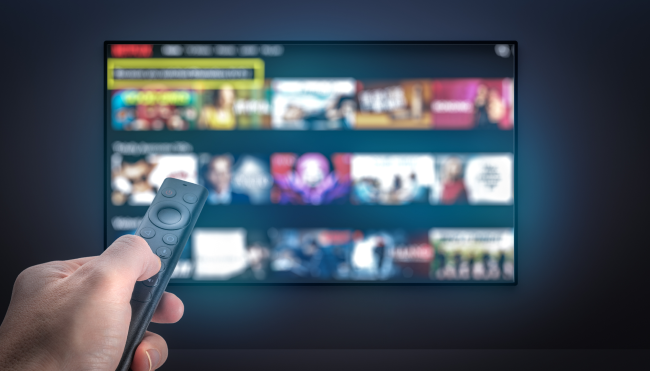- Why Amagi
-
Solutions
Contact UsBusinessWho We Serve
- Offerings
- AI
-
Resources
Contact UsINDUSTRY REPORTSAmagi FAST Report #15: The Power of Live Programming: A Catalyst for Streaming SuccessAugust 21, 2025Read More
-
Company
Contact UsNewsroomAmagi launches AI-powered Smart Scheduler to improve content programmingApril 3, 2025Read More
Blog
How to transform your broadcast operations with cloud modernization
By The Editorial Team, - October 17, 2024
In one of the latest editions of our webinar series Amagi AIRTIME, we had an insightful session with Walid Hamri, Media Systems Engineering, Sinclair Broadcast Group, and Sri Hari T, SVP, Sales, EMEA from Amagi. They discussed the transformative advantages broadcasters can unlock by moving their on-premise legacy architecture to the cloud.
From cost savings to enhanced scalability and flexibility, they dove into key architecture considerations, strategies to streamline workflows and optimize on-site hardware, and the transition from traditional broadcast engineering to cloud modernization.
Let's dive into the key learnings from the session and answer your questions – whether you're just starting your cloud journey or looking to optimize your existing cloud broadcasting setup.
Hari: How has cloud integration changed broadcasting in the U.S. market?
Walid: Traditionally, local stations operated independently with separate infrastructure, meaning they each had storage, media, and equipment. With cloud integration, however, broadcasters can centralize much of their media processing and storage. This allows them to avoid duplicating efforts, such as transcoding and storing the same content at 60 locations. Cloud integration enables efficiency by processing content centrally and then delivering it back to local stations.
Hari: What are the benefits of centralizing TV production in the cloud?
Walid: Centralizing TV production in the cloud optimizes the workflow by reducing duplication. For example, if a show like The Big Bang Theory airs across 60 stations, those stations no longer need to process and store the show individually. Centralized cloud processing means content only needs to be transcoded and quality-checked once. Additionally, cloud-based operations allow greater flexibility in launching new channels, integrating live events, and managing technical feedback.
Read: Transforming live broadcasting through cloud technology
Hari: How do local stations handle content variations like live news or regional ads?
Walid: Local stations can insert their content into national programming. For example, Sinclair's National Desk broadcasts a national weather segment, but if a station prefers to show local weather, they can cut in with their local team. This type of ‘cut-in’ flexibility is built into the structure. The same applies to regional ads and promotions—stations can replace segments of national programming with local ads as needed.
Hari: Can different interruptions or local cut-ins be managed easily in the cloud?
Walid: Cloud-based systems can handle different interruptions and cut-ins across multiple stations. Stations have options for when and how they insert local content, whether weather updates, ads, or local news. This is especially useful when running national content that requires some level of local customization. Stations can follow a set number of predefined interruptions or adapt based on their needs, making content management more streamlined.
Read: Unlock the future of live broadcasting with Amagi DYNAMIC
Hari: What's the future of TV production with cloud integration?
Walid: The shift to the cloud is ongoing, with more improvements. For example, emergency alert systems and Nielsen watermarking are still being moved to the cloud. As technology evolves, the aim is to optimize workflows further, streamline operations, and provide broadcasters with the tools to manage everything remotely while maintaining high levels of security and flexibility. New advancements are made every six months, making delivering TV content more efficient.

Hari: How do you handle broadcasting in multiple languages and regions, mainly for live events?
Walid: We manage multiple languages at the playout level. For instance, audio channels like Audio 1 may be in English, and Audio 7 could be in Spanish during a live event. We configure the system so stations like Univision can broadcast Spanish first, while others may air in English or another language. This flexibility allows each station to choose the version of the broadcast they want to air without disrupting the central feed, which includes all audio tracks and captions.
Read: The Amagi advantage for broadcasters
Hari: How do you manage latency during live broadcasts, and do you handle live sports?
Walid: Latency is inevitable in a cloud-based system due to the time it takes for signals to travel to and from the cloud. While traditional baseband systems have near-zero latency, our system adds a few seconds. This latency is manageable for live sports as it remains consistent for all viewers. We are constantly working on reducing latency, but the key is that all viewers receive the content simultaneously, ensuring synchronization across platforms.
Looking for an effective cloud broadcasting and modernization solution?
Amagi CLOUDPORT, our cloud-native playout platform for broadcasters, offers high resilience, unmatched security, high-quality graphics, unmatched disaster recovery options, and much more.
Get in touch with us!
- Read more about cloud modernization
- Watch the full webinar: Transform your broadcast operations with the power of the cloud
Related Blogs
Get started
Increase revenue and reach with our Broadcast & Streaming solutions.
Cloud modernization. Streaming unification. Monetization. Marketplace.
 German
German French
French Spanish
Spanish Korean
Korean Japanese
Japanese Portuguese
Portuguese


